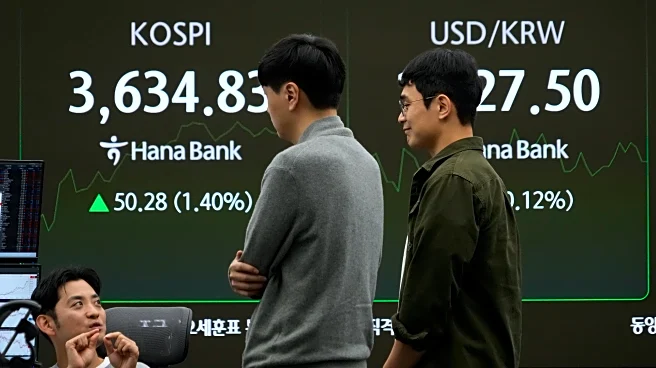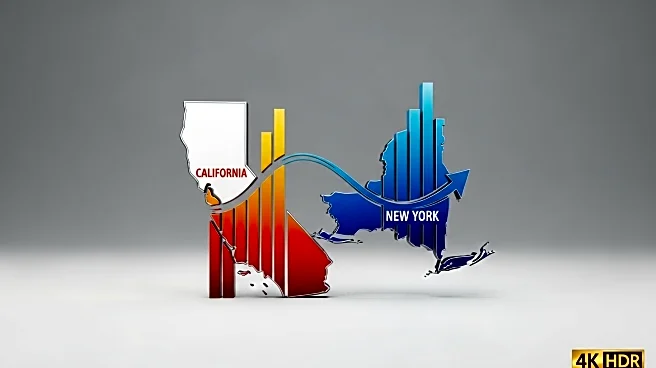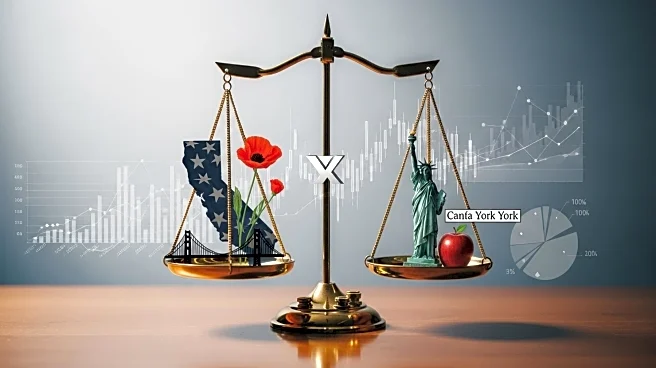What's Happening?
An inflation pattern reminiscent of the 1970s is emerging in consumer price charts, raising concerns for financial markets. The core personal consumption expenditures price index, excluding volatile food and energy prices, is fluctuating around 3%, similar to patterns seen during the presidencies of Nixon, Ford, and Carter. This pattern previously led to significant stock market downturns. Peter Corey, chief market strategist at Pave Financial, notes parallels between current conditions and those of the 1970s, including threats to Federal Reserve independence and potential interest rate reductions. Recent economic data suggests a weakening labor market and slight inflation increases, but the government shutdown has delayed crucial economic reports, leaving Wall Street without updated federal data.
Why It's Important?
The potential for a repeat of the 1970s inflation scenario poses risks to the U.S. economy and financial markets. If inflation rises significantly, it could damage consumer sentiment and spending, which are vital for economic growth. The uncertainty surrounding Federal Reserve policies and geopolitical tensions further complicates the economic outlook. Investors and policymakers must navigate these challenges to prevent a prolonged period of stagflation, characterized by sluggish growth and persistent inflation. The situation underscores the importance of monitoring inflation trends and adapting strategies to mitigate potential economic disruptions.
What's Next?
The ongoing government shutdown may continue to delay critical economic data releases, impacting market predictions and strategies. Investors and policymakers will need to closely monitor inflation trends and Federal Reserve actions to anticipate potential economic shifts. The possibility of increased energy costs and geopolitical tensions could further influence inflation and market stability. Stakeholders must remain vigilant and prepared to adjust their approaches in response to evolving economic conditions.
Beyond the Headlines
The parallels to the 1970s inflation scenario highlight the importance of understanding historical economic patterns and their implications for current policy decisions. The potential impact on consumer behavior and market dynamics underscores the need for comprehensive economic analysis and strategic planning. The situation also raises questions about the role of central banks in managing inflation and maintaining economic stability amid geopolitical and market uncertainties.













